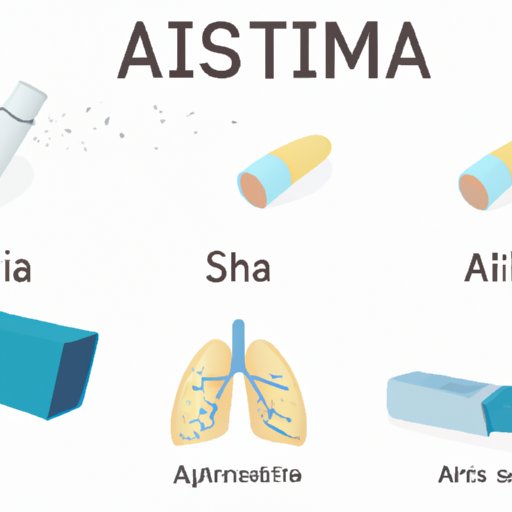
Introduction
Asthma is a chronic respiratory disease affecting millions of people worldwide. It is a condition that causes inflammation and narrowing of the airways leading to difficulty breathing, coughing, and wheezing. It can affect people of all ages, and while there is no cure, it can be managed with appropriate treatment. Early diagnosis is critical in preventing severe asthma attacks. This article aims to provide a comprehensive guide to diagnosing asthma, exploring symptoms, triggers, diagnosis, and medical imaging.
“5 Signs That You May Have Asthma: A Comprehensive Guide to Understanding the Symptoms”
Asthma symptoms can vary from person to person; however, some signs can suggest the condition. These may include wheezing, shortness of breath, coughing, chest tightness, and difficulty breathing. People may experience these symptoms daily or sporadically, depending on several factors. Asthma attacks can be triggered by physical exercise, allergens, or viral infections. It is useful to keep a diary of asthma symptoms to help doctors understand the frequency and severity of the condition.
Diagnosing Asthma: A Step-by-Step Approach for Doctors and Patients
When it comes to asthma diagnosis, a step-by-step approach is taken. Healthcare providers will begin by taking a comprehensive medical history of the patient. They will inquire about past medical conditions, allergies, family history of asthma or allergies, and any medications taken. The information gathered will provide valuable insights into the diagnosis process. A physical examination may follow, where the doctor may listen to the patient’s lungs with a stethoscope to check for wheezing or other sounds associated with asthma.
The Importance of Lung Function Tests in Asthma Diagnosis
Lung function tests are crucial in diagnosing asthma. These tests aim to assess the amount of air the lungs can inhale and exhale to determine if there is any obstruction in the airways. The most common lung function test is a spirometry test, where the person is asked to take a deep breath and exhale as much air as possible into a mouthpiece. The results of these tests help doctors diagnose asthma, assess the severity of the condition and determine the best course of treatment.
Common Triggers of Asthma and How to Identify Them in Your Daily Life
Common triggers of asthma include allergens such as pollen, dust mites, and animal dander, viral infections, physical activity, cold air, and smoke. Identifying these triggers can help people manage their condition and prevent asthma attacks. Keeping a diary of symptoms can help identify asthma triggers. When asthma triggers are identified, people can take steps to avoid them. For example, if pollen is a trigger, avoiding going outside on days with high pollen counts is an option.
From Wheezing to Shortness of Breath: Key Indicators that Point to an Asthma Diagnosis
Asthma symptoms can vary in severity, and while some people may experience symptoms periodically, others may have long periods of symptoms. Symptoms can range from wheezing and shortness of breath to coughing and chest tightness. Recognizing the severity of symptoms is crucial as it can help people know when to seek medical attention. Mild symptoms may be managed with quick-relief medication. However, severe symptoms may require treatment in the hospital emergency department.
The Role of Medical Imaging in Diagnosing Asthma: X-rays, CT Scans and More
Medical imaging studies like X-rays, CT scans, and MRIs can help diagnose asthma. These tests provide detailed images of the body and can reveal underlying conditions that may be contributing to asthma symptoms. Doctors may order an imaging study if they suspect complications like pneumonia, which can exacerbate asthma symptoms. These tests help healthcare providers make accurate diagnoses and develop effective treatment plans.
Conclusion
In conclusion, asthma is a chronic respiratory condition that requires early diagnosis. People experiencing symptoms of asthma should seek medical attention to receive appropriate treatment and avoid severe attacks that can lead to hospitalization. The diagnosis process involves physical exams, lung function tests, and imaging studies. Identifying triggers of asthma can help manage symptoms, and effective communication with healthcare providers is crucial. With proper diagnosis and treatment, people living with asthma can lead healthy and active lives.




